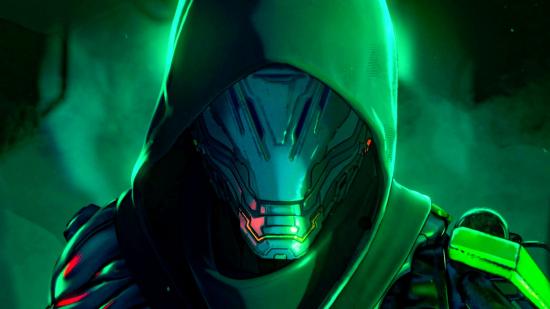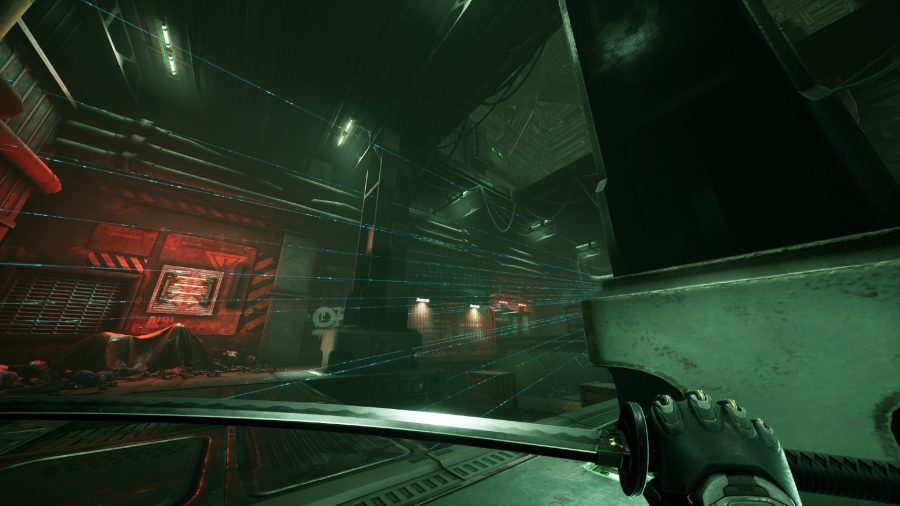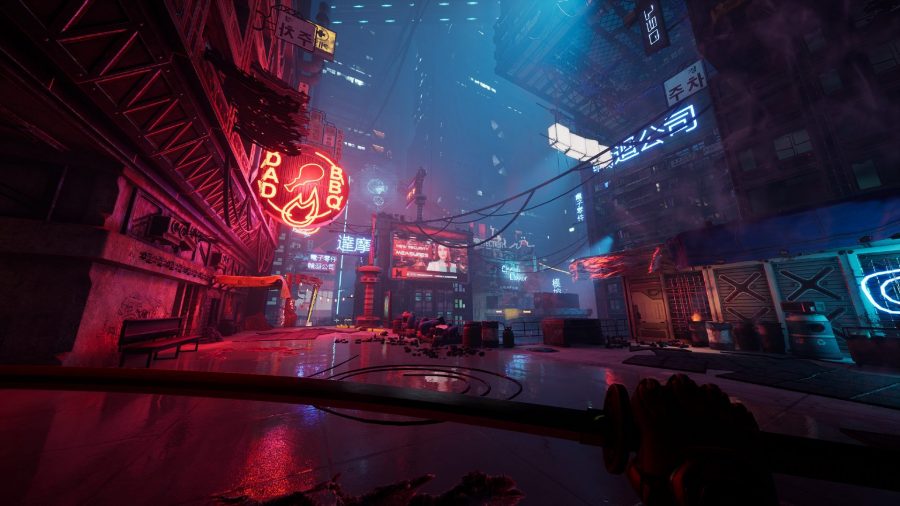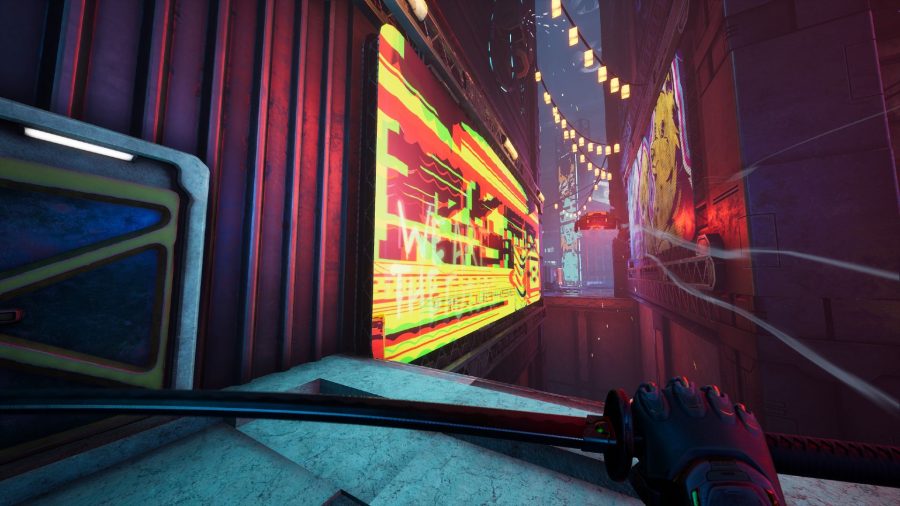Our Verdict
Unrivalled parkour mechanics and tough-as-nails combat more than make up for a bland cyberpunk setting.
Ghostrunner is definitely a gameplay-first proposition. If you’re hoping to be whisked away to a dystopian cyberpunk setting then you may be disappointed, as Ghostrunner is only really interested in ticking boxes: there’s a ton of neon, a class struggle set in a tower clearly inspired by High-Rise (the movie), and the odd foray into cyberspace. Fortunately, the setting won’t matter a lick once you’re chaining together high-speed wall-runs and slapping your katana through goons like water balloons of viscera.
Your toolset is pretty simple. You can wall-run, slide, lasso across large gaps, slow time and strafe through the air, and attack with your insta-kill katana. Over the course of the roughly six-hour story, you’ll also pick up a handful of abilities like Blink, which lets you dash a considerable distance forward carving through any enemies in your path, and Overlord, which lets you hack enemies and force them to attack each other. You’ll never need these abilities to clear an area, but they can be handy for instantly eliminating a particularly tricky enemy type.
However, for the vast majority of Ghostrunner, wall-running, sliding to gain speed, slowing time to avoid projectiles, and your standard katana attack are all you’ll need to slay in style. That’s good, because developer One More Level has made those four movements feel impossibly slick. You can quickly pick up speed by launching into a slide, jumping out of it, and landing straight back into another slide. Use that to launch yourself into a wall-run and you’ll carry that momentum with you, letting you slingshot around the architecture and pick enemies off with aerial strikes.
The threat of dying to any damage is mitigated by frequent and forgiving checkpoints, ensuring you’ll never lose more than 30 seconds’ worth of progress – I’ve finished missions in 20 minutes with a death count nearing 200. These resets throw you straight back in at the start of a fight, encouraging you to experiment until you find the rhythm and route that works best for you.
And it’s not all violence. Huge sections of each level are effectively parkour puzzles and as with so much of Ghostrunner, hanging back and planning out your next move is not the way to go. Instead, you’re encouraged by the checkpoint system to learn the course through countless deaths. The only way to play is to course through the narrow channels like a pinball, picking up so much momentum that the bright neon adverts burn an image in your mind like the Star Gate scene from 2001: A Space Odyssey.
Ghostrunner’s level design lends itself to that of race tracks, with combat arenas containing several relatively obvious routes for you to deathball around, and a few opportunities to switch lanes. Attempt to navigate any fight on the ground and you’ll be swiftly dispatched by the accurate enemy AI and one-hit one-kill mechanics.
To keep you on your toes, Ghostrunner constantly introduces new enemy types to break your routine. Standard grunts are stationary and fire a single projectile at regular intervals, making them easy enough to strafe around or simply outrun. Soon enough you’ll come across enemies with shields who can only be attacked from behind, and MG-toting gunners who fire a stream of bullets that force wider flanks. Then there are ninjas, who charge at you with their own katanas and can only be beaten with a well-timed parry. Berserkers can leap huge distances and often interrupt your route, prompting a sudden change of lanes. There are even enemy ghostrunners who behave similarly to you.
More like this: Here are the best ninja games on PC
The trickiest opponent, however, is a robot that emits long-distance sonic blasts. If the bot has line of sight on you then you’re pretty much as good as dead, so you’ll have to barrel past every other threat in the area, darting between cover to close the distance on it. If you’re caught out in the open when its sonic blast cuts through the room then you might be able to dodge it if there’s a lasso point nearby. This is where Ghostrunner’s abilities do come in handy, especially Tempest, which lets you fire projectiles back where they came from. By the time the credits rolled this was the only ability I was using, and that was almost entirely to deal with these droids.
Boss fights offer a refreshing change of pace and some inventive new ideas, but the checkpointing system can make some of these feel anticlimactic: Ornstein and Smough wouldn’t have felt like quite such an achievement if FromSoftware had added a checkpoint halfway through the battle. While the sense of accomplishment is a little lacking, the variety of bosses is impressive, with one fight mixing bullet hell and parkour to create one of the most stressful, wrist-cramping sections of gameplay I’ve ever experienced. Another boss plays like something out of Sekiro, with a series of perfectly timed parries required to get an attack in and absolutely no margin for error.
Ghostrunner never lets you settle. Its main story is a breathless, adrenaline-fuelled race to the top of the tower. There are collectibles to hunt down and endless appeal for speedrunners who want to master every level like a racing circuit, but Ghostrunner left me spent and totally satisfied – six hours of slicing through nondescript cyberpunk goons to nosebleed techno will do that to you. Ghostrunner’s smart level design and rich array of enemies are a joy to blitz through, but it’s all underpinned by some of the slickest parkour mechanics of any game. Ever.



